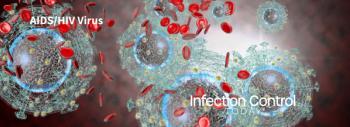
Human Metapneumovirus: What Is it and What Is Being Done About It?
Human Metapneumovirus (HMPV) is not as well-known as its relative, respiratory syncytial virus (RSV), so here is the information that infection control and prevention personnel need to know about this respiratory virus.
While respiratory syncytial virus (RSV), influenza, and COVID-19 are respiratory viruses called the “triple pandemic” this winter, there may have been yet another culprit. Could some of the illnesses be human metapneumovirus (HMPV)? What does the data show? Infection Control Today® (ICT®) explains what HMPV is and whether it is necessary to differentiate it from similar illnesses.
“[HMPV] can cause upper respiratory infections, bronchitis, and pneumonia, just like influenza, RSV, COVID-19, and other viruses, Anne Meneghetti, MD, executive director of medical information at
Patients with a history of asthma, COPD, emphysema, or other lung disease are not more likely to contract the illness. However, once they have it, these lung diseases can worsen symptoms. Patients with weakened immune systems, undergoing chemotherapy, or being a post-organ transplant also can have more deleterious symptoms.
Although no conclusive studies have yet verified its transmission mode, “it is likely that transmission occurs by contact with
Discovered in 2001
While there is no particular antiviral therapy to treat HMPV and no vaccine to prevent HMPV, a clinical vaccine trial of combined HMPV and Parainfluenza Virus Type 3 was completed in
Meneghetti told ICT, “Common symptoms include cough, nasal congestion, and shortness of breath—these are similar to what we see with other viruses, so the symptoms alone don’t distinguish these viruses from another. While influenza is more common in the winter, this virus is more actively circulating in late winter and early spring.”
To make initial diagnosis more difficult, HMPV, influenza, and RSV can circulate concurrently during the respiratory virus season. Although data do not prove it, the incubation period is 3 to 6 days. The median duration of illness can vary depending upon the disease’s severity but is similar to other respiratory infections caused by viruses.
According to the
“Does knowing that one has metapneumovirus matter? There’s no specific treatment, so knowing whether or not someone has metapneumovirus isn’t typically a routine consideration,” Meneghetti said.” Prevention is the same as other respiratory viruses, including handwashing, covering one’s mouth and nose, and avoiding others while sick.”
The CDC does
According to the CDC, “In health care settings, providers should follow
Newsletter
Stay prepared and protected with Infection Control Today's newsletter, delivering essential updates, best practices, and expert insights for infection preventionists.






